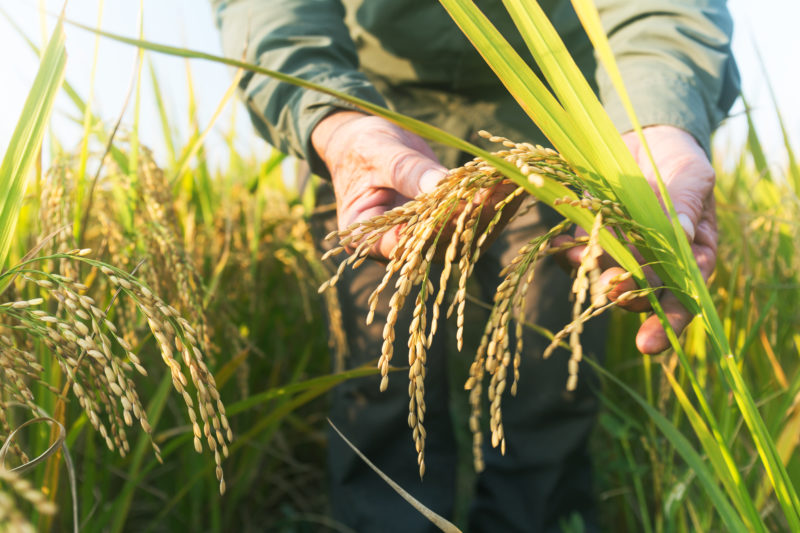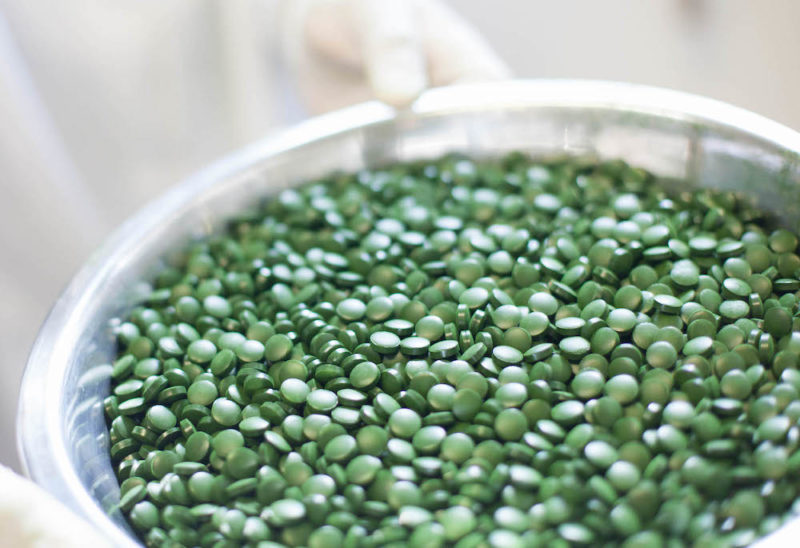Going plant-based is exciting, but it can also be a little confusing. Certain questions start to come up when you first start your journey:
- Does fake-cheese taste as good as real cheese?
- Is barbecue chick’n as good as barbecue chicken?
- Is being vegan going to be this hard forever?
All jokes aside, most of us depend on animal products for a chunk of our nutrition. So switching over to just plants (or mostly plants) can throw us for a loop. Most vegan babies (new vegans, not actual babies that happen to be vegan) stumble at first, but find their way.
A frequently asked question by new vegans is: what can I eat to ensure I’m getting my protein?
Today, we’re answering that question.And don’t worry–if you think you need to get creative, think again! It’s super easy to work in some protein.
Here are four easy vegan choices.
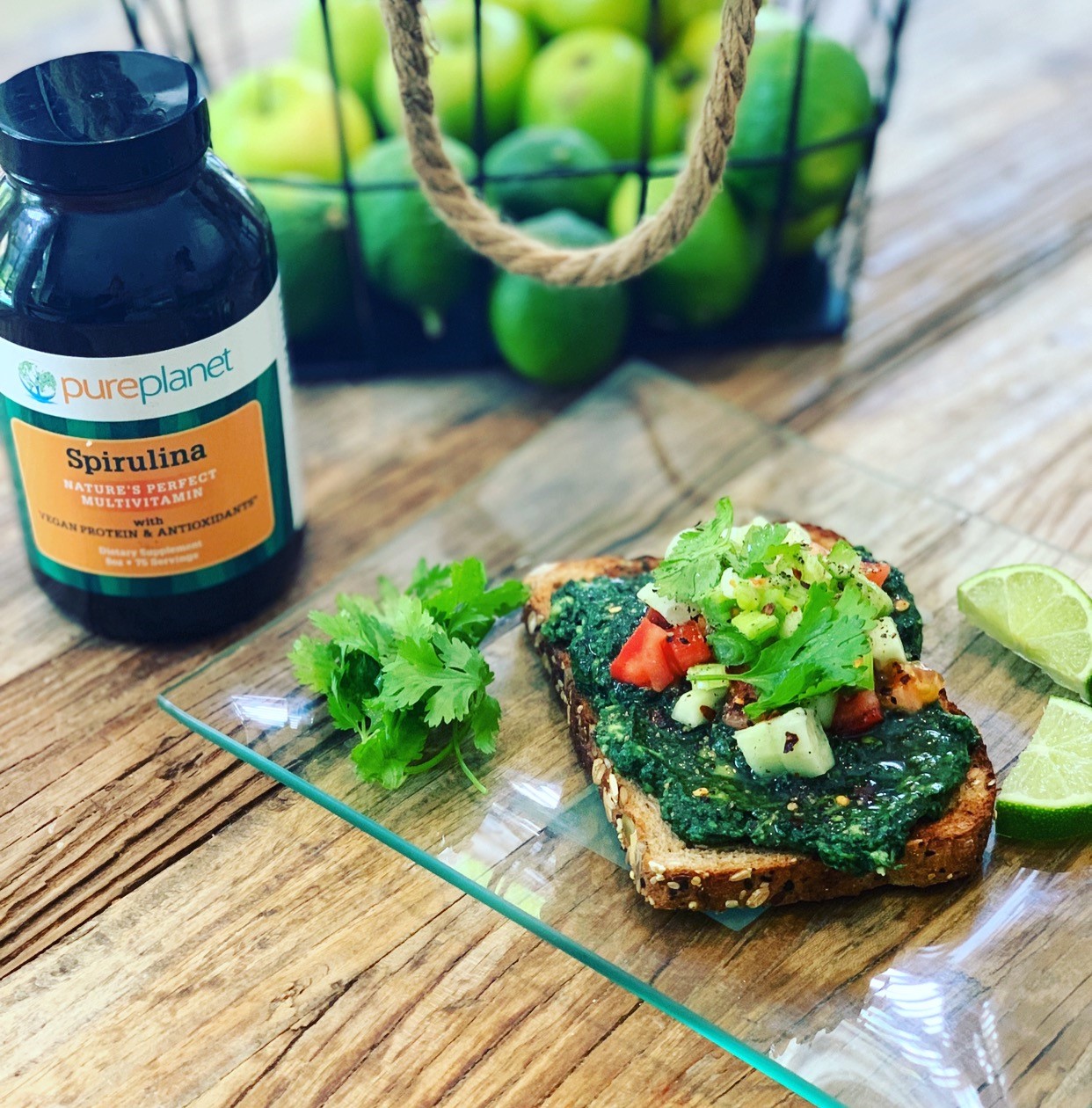
Photo cred: @biohackingjen (Instagram)
Sea Greens – Spirulina
Spiru-what? If you’re not well-versed in the green veggie world, you may not have any idea what the heck we’re talking about here. Spirulina is one of our most favorite greens because of its nutritional content.
Here’s a little run-down about this sea plant:
- Nutrient-dense, packed with minerals that help support your body
- Filled with antioxidants that support oxidation (basically, it helps your body fight free radicals and also works as a post-workout pick-me-up)
- May help balance healthy cholesterol levels
What’s more, this blue-green ocean flora can also supply protein. According to the United States Department of Agriculture (USDA), spirulina contains about 4 grams of per tablespoon.
According to Harvard Health, our recommended protein allowance per day amounts to about 0.8 grams per kilogram of body weight. So, adding spirulina to one your meals or snacks could help you reach your daily protein goals.
For fun ways to incorporate this sea green into your diet, check out some of these spirulina recipes.
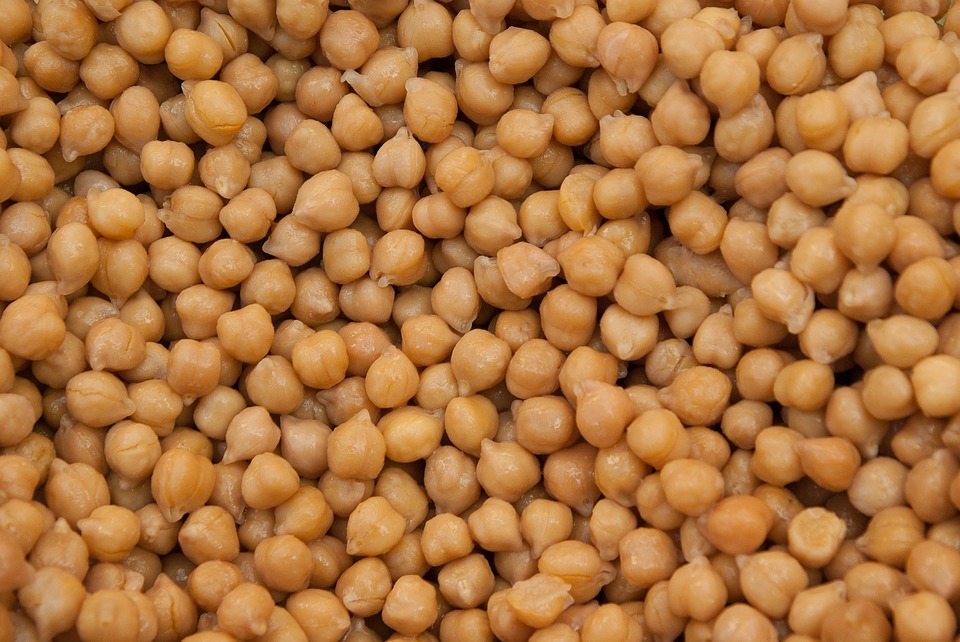
Legumes
What are some other plants that can help you get your daily protein? Consume some legumes!
In case you did not know, legumes are the fruits and seeds of a plant. Some of our favorites include:
- chickpeas
- lentils
- peas
- kidney beans
In particular, we love peas! Peas can supply 8.2 grams of protein and 8.8 grams of fiber. Because of this, nutritionists and nutrition-based companies create protein shakes using these little bulbs of awesomeness.
We do not have a protein shake made with peas at Pure Planet, but we do have something equally as cool! Meet Master Amino Acid Pattern!
Our Master Amino Acid Pattern is predigested, 100% vegetarian protein support, made from legumes! Because these legumes are pre-digested in a patented process, they may help aid protein synthesis. Basically, they can be used to help your body create protein by supporting amino acid production.*
Because of this, these legumes may also help fuel workouts, whether you are running a marathon on the treadmill or pumping iron by the weight racks.

Chia Seeds & Hemp Seeds
From one type of seed, we move on to other cool choices: chia and hemp seeds!
Chia seeds can help provide 4 grams of protein and a whopping 11 grams of fiber in one serving size. What’s more, these seeds pack amino acids like peas. This means that are quality protein source.
Hemp seeds work in the same way. The USDA reports that hemp seeds contain about 9.46 grams of seeds in about 3 tablespoons. What’s more, hemp seeds contain essential fatty acids, which help promote brain health and more.
Both chia and hemp seeds are easy to incorporate into your diet. You can buy a big bag and sprinkle them in literally everything you consume: from water to salads to workout smoothies!
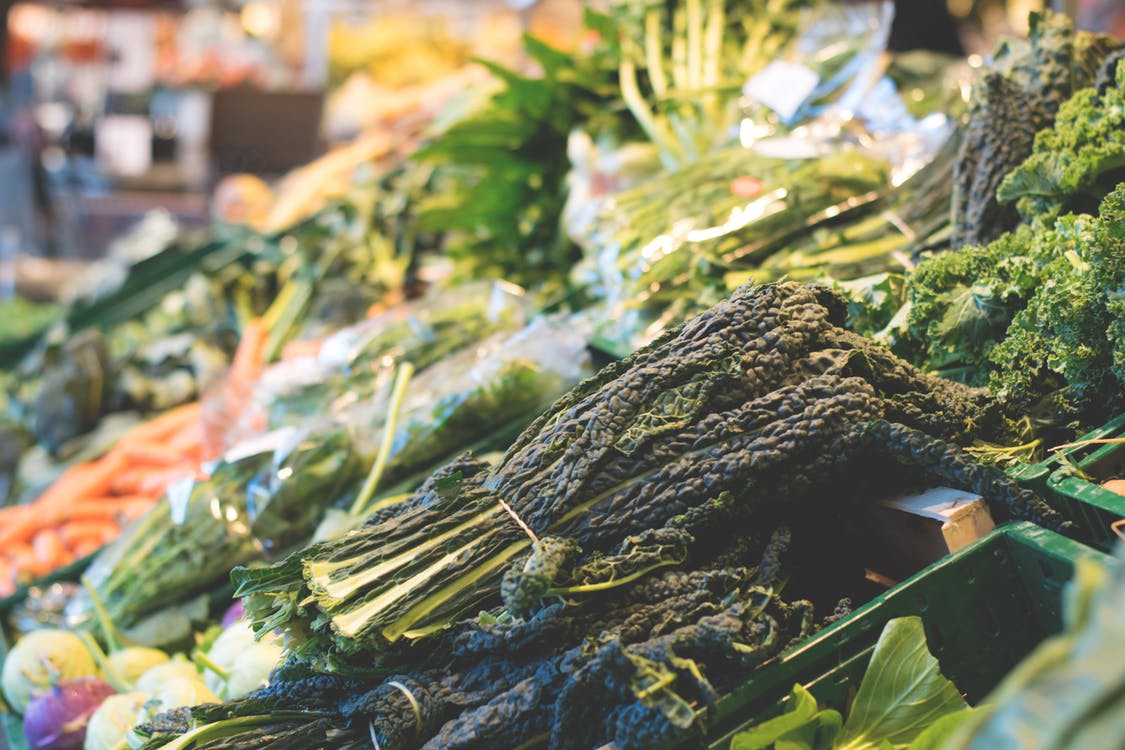
Leafy, Green Veggies
And last but not least, leafy, green veggies can help provide protein for plant-based eaters. So, if you were trying to avoid eating your veggies, sorry!
While every vegetable contains essential minerals and antioxidants, not all contain equal amounts of protein. Courtesy of Medical News Today, here are the protein-packed veggies you should be gorging on:
- watercress
- alfalfa sprouts
- bok choy
- asparagus
- broccoli
Getting your greens in could be a bit hard, and that is why we created our Best of Greens mix, containing cereal grasses (like barley grass), cruciferous veggies (like broccoli and kale), algae and sea veggies (like spirulina and kelp).
For fun ways to work greens into your day, check out our mini-guide.
Pure + True Since ’92
At Pure Planet, we like to give you the goods, without the nasties. Our products do not contain fillers, artificial flavors or GMOs. Check out our selection of superfoods.
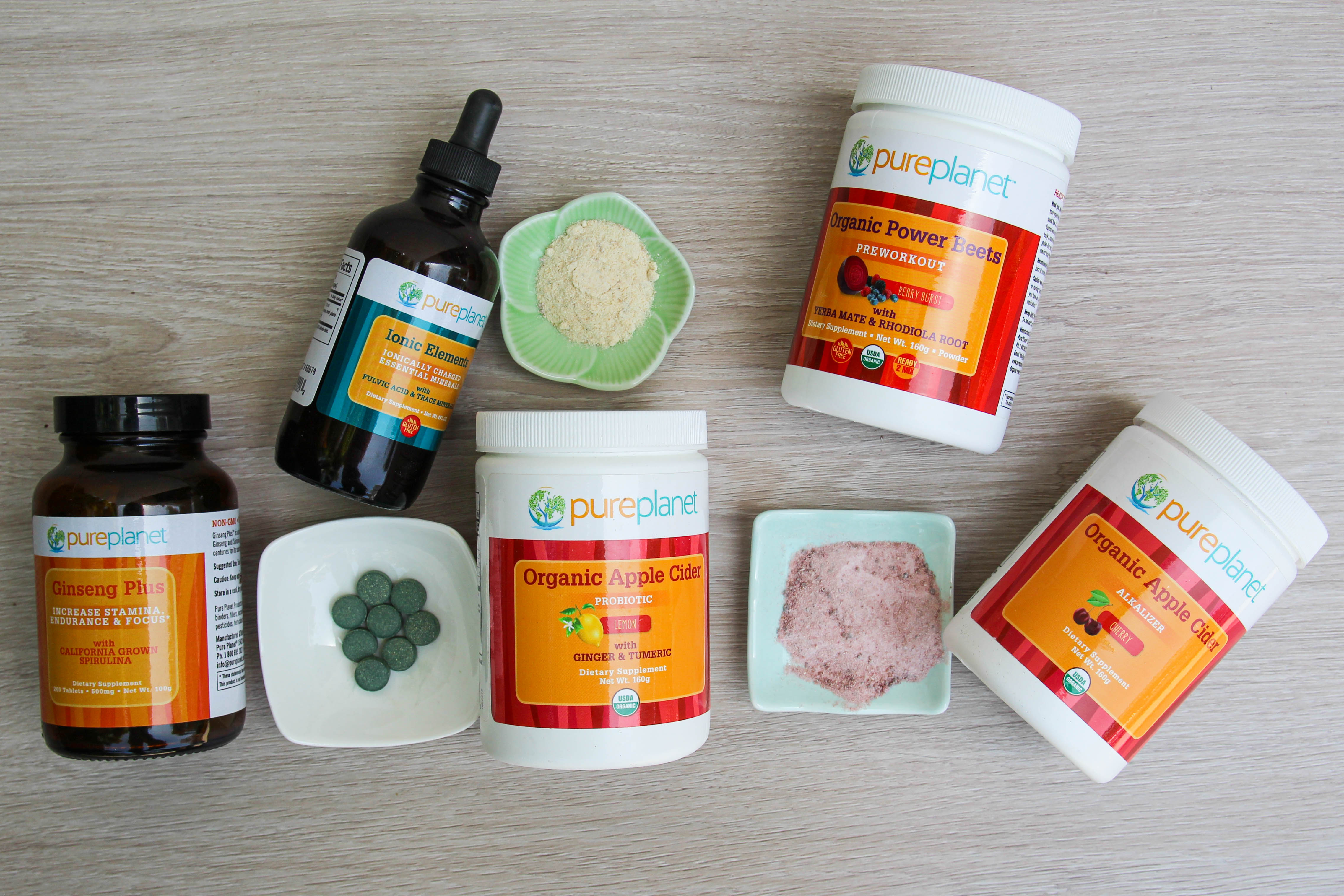
*These statements and products have not been evaluated by the Food and Drug Administration. These products are not intended to diagnose, treat, cure or prevent any disease.
Apple cider vinegar (ACV) may taste bitter, but the benefits of drinking this elixir are pretty sweet! From digestive support with probiotics to alkalizing acetic acid, nutritionists LOVE this natural remedy’s ability to promote health.
But did you know this tonic can help you shed some pounds while encouraging your heart health too? Here are some more benefits of this beloved superfood drink.
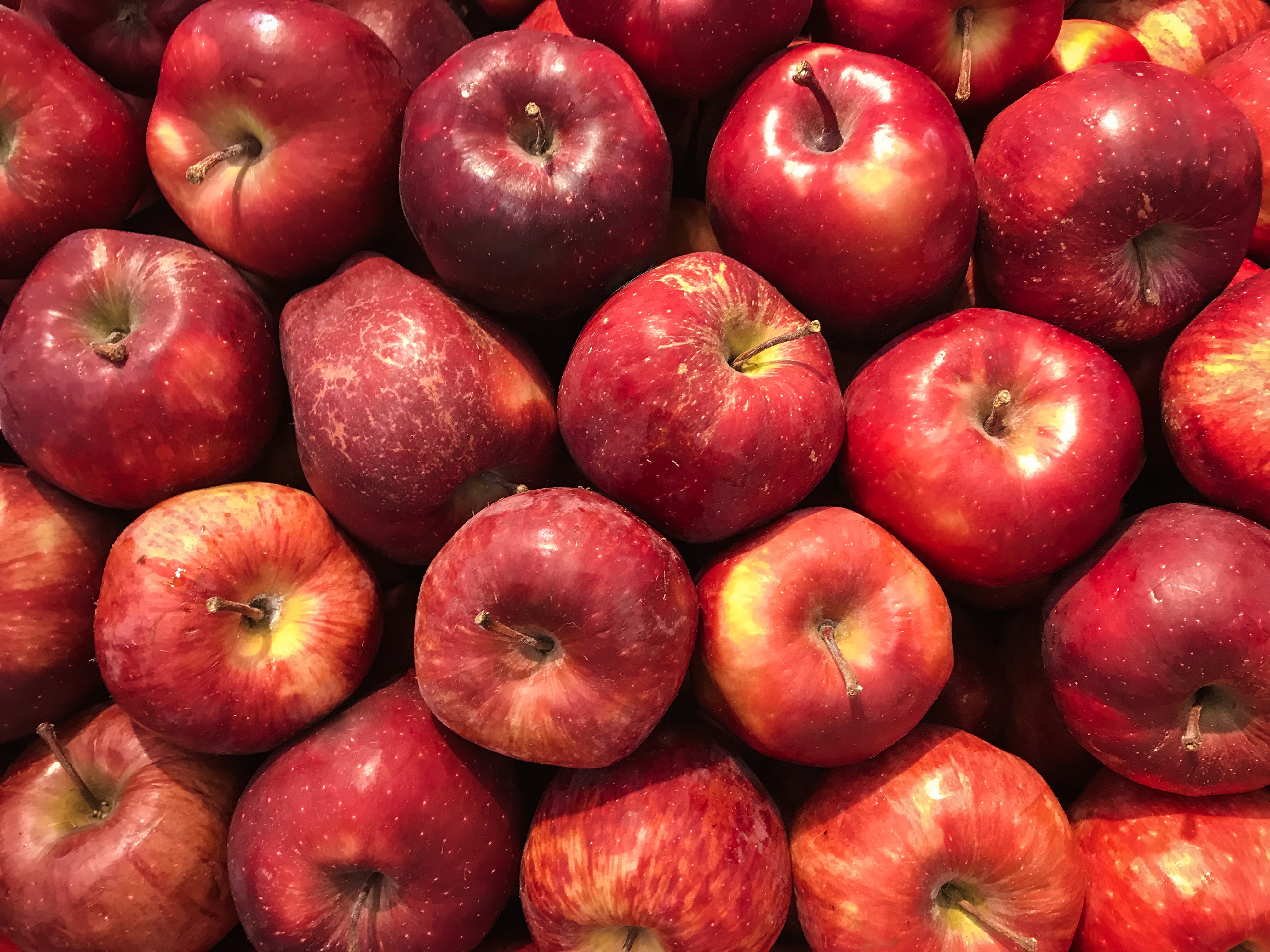
Apple Cider Vinegar Benefits
Weight Loss Support
Keeping You Full
Looking to lose weight? Sipping on some cider could help you reach your goal. Unfortunately, taking a swig does not magically shrink your waist, but adding it to your routine can boost your results.
Here’s the gist: the acid in apple cider vinegar may help you feel full for longer, thus making you less likely to overeat. And that’s not just based on anecdotal experience, it’s backed by science!
Researchers at Swedish college Lund University studied how acetic acid could help affect the glycemic index of bread, paying special attention to insulin levels and fullness. (1) Published in The European Journal of Clinical Nutrition, the investigative study focused on 12 healthy volunteers.
What were the results?
Volunteers felt fuller when they consumed the vinegar before eating their carb-packed meal. Plus, the acid helped balance blood glucose and insulin levels. But we’ll get to that benefit a little later.
Researchers at the Arizona State University took their own exploration on satiety a bit further–they quantified just how many calories you may be able to save by ingesting apple cider vinegar before you eat. (2)
So, what they find?
With increased fullness, participants ended up saving 200-275 calories when eating a carb-loaded meal. It may not sound like a lot, but if you add these numbers up daily, they could lead to an easy way to shed some lbs.
But ACV does more than just help you feel full–it may also help you reduce body fat too.
Fat-loss Support
We just have to get this out the way: YAAAS! Okay, cool, let’s talk. Losing stubborn body fat is a a true plight of mankind, so we LOVE hearing that this sour liquid can help.
One study published in Bioscience, Biotechnology and Biochemistry found that the acetic acid present in vinegar may help keep body fat accumulation down. (3)
Japanese researchers focused on obese individuals, supplementing them with daily ACV for 12 weeks. This placebo-controlled, double-blind study found that participants who drank the vinegar enjoyed “significantly” lower body weight and visceral fat when compared to those who did ingest the tart drink.
That’s good news! Along with greens, like spirulina, this vinegar is a must-have in your weight loss regimen
But there’s even more that is great about this tart tonic. Apple cider vinegar can help promote health by also encouraging a healthy heart.
Here’s how.
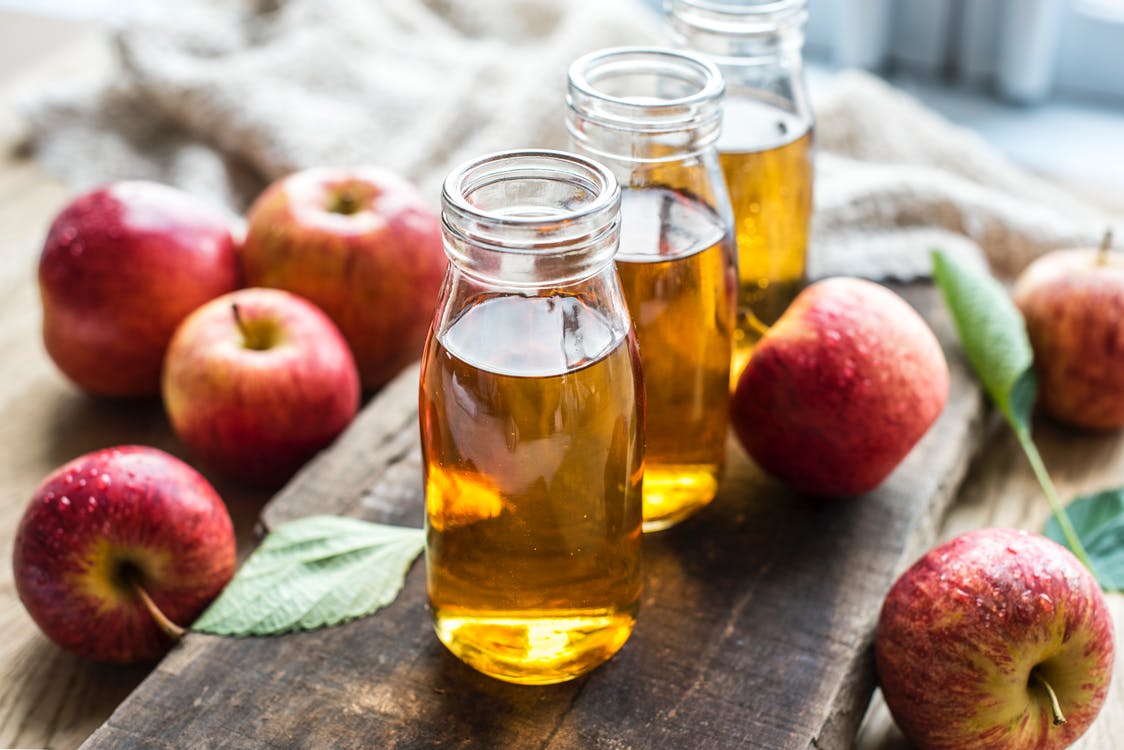
Heart Health Support
Blood Glucose, Insulin and Triglycerides
This tart superfood drink is so great for the heart that many institutions have studied it as a means of supporting individuals with diabetes. Remember when we mentioned balanced glucose and insulin levels earlier? Now let’s talk about that!
One literature analysis published in Diabetes Research and Clinical Practice reviewed the purported benefits of acetic acid in vinegar. Overall, those benefits were supported by well-researched analysis. (4)
Here’s how it works. The acid can help lower triglyceride levels, which are little molecules that make up fats and oils. If you have a high level of these, you’re more likely to suffer from a stroke, according to the University of Michigan.
Because this vinegar can help balance triglycerides, it may be able to lower cholesterol as well.
What’s more, researchers have found that ACV helps balance glucose concentrations and insulin. One study found that nightly ingestion helped individuals with Type 2 Diabetes enjoy reduced levels the next morning. (5).
Blood Pressure
Because of its ability to help blood glucose, insulin-levels and other diabetes-related conditions, researchers have also focused on this vinegar’s effect on blood pressure.
So, how does it fare? While human research is sparing, it is positive! One Harvard study published in the American Journal of Clinical Nutrition found that consumption helped decrease the risk in of heart disease in a group of women. (6)
Overall, like beets, apple cider vinegar can be a perfect superfood to integrate into your heart health regimen.

Pure Planet Knows ACV
You may know that apple cider vinegar is good for your health, yet the bitter taste might leave you gagging. No worries! We blend our apple cider vinegar powders with whole foods to help boost flavor and benefit.
So, what will it be? The cherry-punch Alkaline blend or our lemon, gingerade Probiotic blend?
Looking for more reviews of hyped products? Check out what we think of aloe vera.
Links
- Östman, E., Granfeldt, Y., Persson, L., & Björck, I. (2005). Vinegar supplementation lowers glucose and insulin responses and increases satiety after a bread meal in healthy subjects. European journal of clinical nutrition, 59(9), 983.
- Johnston, C. S., & Buller, A. J. (2005). Vinegar and peanut products as complementary foods to reduce postprandial glycemia. Journal of the American Dietetic Association, 105(12), 1939-1942.
- Kondo, T., Kishi, M., Fushimi, T., Ugajin, S., & Kaga, T. (2009). Vinegar intake reduces body weight, body fat mass, and serum triglyceride levels in obese Japanese subjects. Bioscience, biotechnology, and biochemistry, 73(8), 1837-1843.
- Shishehbor, F., Mansoori, A., & Shirani, F. (2017). Vinegar consumption can attenuate postprandial glucose and insulin responses; a systematic review and meta-analysis of clinical trials. diabetes research and clinical practice, 127, 1-9.
- White, A. M., & Johnston, C. S. (2007). Vinegar ingestion at bedtime moderates waking glucose concentrations in adults with well-controlled type 2 diabetes. Diabetes care, 30(11), 2814-2815.
- Hu, F. B., Stampfer, M. J., Manson, J. E., Rimm, E. B., Wolk, A., Colditz, G. A., … & Willett, W. C. (1999). Dietary intake of α-linolenic acid and risk of fatal ischemic heart disease among women. The American journal of clinical nutrition, 69(5), 890-897.
Should You Ditch Sports Drinks for Coconut Water or Vitamin Water? Here’s the Science-Backed Answer
August 9, 2019Whether you’re going hard on the treadmill, waking up with a mind-numbing hangover or just quenching thirst on a hot day, sports drinks have become an American staple. Children even pack them in their school lunches. But should we be downing this drink as often as we do?
The market has expanded since the inception of these beverages in the ’90’s. Other energy-boosting alternatives (like beet juice and blends) take up just as much space in the market aisles. But today, we’re comparing three options. Between sports drinks, vitamin water and coconut water, which is the better choice?
The answer? Well, it’s important to focus on how you’re going to use them and just what ingredients go into your specific drink of choice. Let’s dive in a little deeper with a comparison.

How Do Sports Drinks Fare?
Exercise and Performance
Sports drinks weren’t always multi-purpose. They were first created in response to fatigued football players on the field. Does its purpose keep up decades later? A University of California, Berkeley report suggests that the beverage might actually be beneficial for hydration and endurance. But…there’s a catch.
The study merely suggests that they could be beneficial…if someone is working out vigorously in a session for 90 minutes or more; however, those results can’t be extended any farther than that. And it does not take into account how daily consumption would contribute to overall health.
What does this mean? Well, for the average person putting in say, 30 to 60 minutes a day, these drinks wouldn’t be doing the job. And even then, the harmful extras could do more harm than good in the long run.
So, what danger lurks in these drinks?
Drawbacks
Most sport drinks contain a bunch of additives, which makes adding these as your daily go-to’s a definite no-no. Some of these drinks may include:
- high fructose corn syrup (glucose-fructose syrup)
- sucrose syrup
- sodium citrate
- monopotassium phosphate
- food starch
- color additives (such as red 40)
Does anything already stick out to you? You might have already found at least two things you are shaking your head at. There are no super nutrients, just super dud ingredients.
First, let’s tackle the syrups. High fructose corn syrup helps sweeten and lengthen the shelf life of food and drinks. However, the syrup is associated with consequences. For example, the American Society of Nephrology suggests the syrup can contribute to higher blood pressure levels in adults, even with no history of hypertension.
And sucrose syrup? This sweetener has been tied to the promotion of obesity, type 2 diabetes, high blood pressure and artery disease. (1)
But, do the added chemicals do any benefit? Short answer, not really. In theory, adding potassium and sodium may sound like a good idea, but they don’t really add anything when drinking from sports drinks. You’re much better off just getting this from trace minerals from fruits, veggies and whole foods. (If you need help working greens, try our 4 easy steps to start eating more veggies).
Let’s not forget bout the color additives. You should stay away from those. Their sole existence is to make the drinks look more marketable, but studies have linked them to higher risks of hyperactivity in children and risk of other diseases.(2)
What About Vitamin Water?
Okay, so maybe sipping on a sports drink isn’t the best idea. Is vitamin water any better than sports drinks?
Like sports drinks, this concoction was created when plain water just didn’t do the trick. Some people thought, “what if we could add minerals and vitamins to boost rehydration?” Flash forward to now, where vitamin waters are plentiful, with diet and zero-calorie options to match.
But are they any different than sports drinks? Not really.
Exercise and Endurance
Again, adding minerals and vitamins to your drink sounds appealing. For people who avoid swallowing vitamin capsules (it can be difficult, we get it), seeking out vitamins through this route seems ideal.
With added electrolytes, certain vitamin water choices might come in handy, but only during hard, intense workouts here and there.
But what about an average user? The additives may set the drink back.
Drawbacks
In theory, vitamin waters are great: just replenish what you’re losing. Perfect, except that’s not exactly how that works.
Some of these beverages can contain excess amounts of vitamins, way more than one person would need in a day. And unless you were really pumping iron, like every second of a long workout, there is no way you would lose enough electrolytes or vitamins to even warrant the excess in each bottle.
But that’s fine, right? The more, the merrier? Actually, no. As with lots of things in life, too much of anything can be detrimental.
Plus, these drinks often fall prey to the same ingredient listings as sports drinks, including harmful syrups and sugars, and their potential damage. (3) It’s best to opt out of this choice.
So, how does coconut water compare?
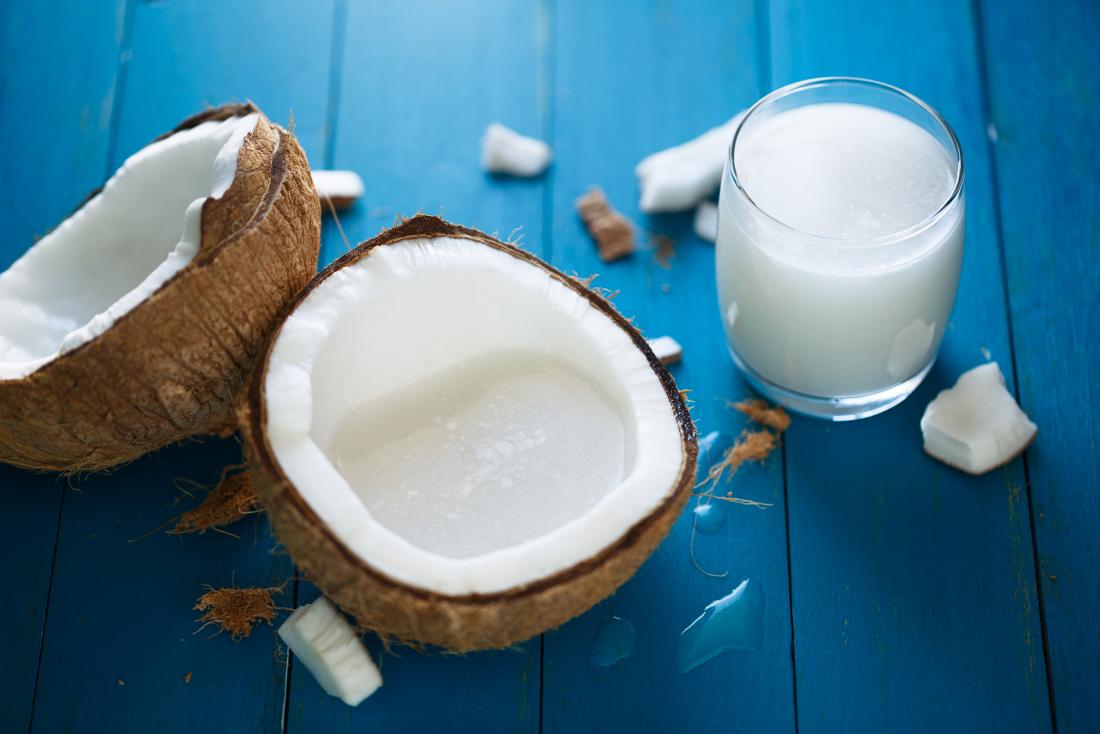
Is Coconut Water Any Better Than Sports Drinks?
Is coconut water just another online health fad or does it actually have value? Until recently, coconut water was only seen as a healthy, hydration choice, especially for those that wanted a little different taste from plan water. But nowadays, it’s multi-purposeful.
So, what does coconut water have going for it?
Naturally, coconut water contains several plant nutrients:
- antioxidant properties (like those of tart cherry)
- fiber
- vitamin C (like the amla berry)
- important minerals, like electrolytes, magnesium, calcium and potassium
But can coconut water be beneficial for working out?
Coconut Water & Working Out
Part of the water’s antioxidant properties can help fight free radicals, which can be triggered during stress or injury. This can affect blood pressure, which may indirectly affect your workout. (4)
As for actual workout benefits? The research is sparse, but it’s still looking good. Because this water contains electrolytes, it can be a good source of replenishment after a good round of exercising.
One study published in the Journal of the International Society of Sport Nutrition suggests there this hydrating drink can stand up to high-electrolyte drinks in the replenishing category, with less calories and more natural nutrients. (5) Another study published in the Journal of Physiological Anthropology and Applied Human Science suggests sodium-infused coconut water and regular sport’s drinks perform on par as well. (6)
Of course, plain water can fuel average workouts too, but when it comes to intense workouts, you can opt for coconut water instead of high calories and fructose-filled options. Just be sure your coconut water uses pure and true ingredients and is free of added sugars.
Pure Planet Coconut Water
Coconut water is already great, so some superfood-help can only make it more awesome! That’s why we carefully crafted our premium coconut water blends.
- Joint Rescue: Optimized with tumeric and black pepper, this blend promotes healthy joints–for athletes and non-athlete’s alike!
- Rehydrate: Mixed with ginger, mineral salts and rooibos, this blend provides boosted hydration support, supporting electrolyte balance.
- Energy: Specially-designed with yerbe mate and rhodiola root, this blend promotes stable energy.
Stay hydrated, friends!
Cited Studies:
- Shapiro, A., Tümer, N., Gao, Y., Cheng, K. Y., & Scarpace, P. J. (2011). Prevention and reversal of diet-induced leptin resistance with a sugar-free diet despite high fat content. British Journal of Nutrition, 106(3), 390-397.
- Arnold, L. E., Lofthouse, N., & Hurt, E. (2012). Artificial food colors and attention-deficit/hyperactivity symptoms: conclusions to dye for. Neurotherapeutics, 9(3), 599-609.
- Malik, V. S., Schulze, M. B., & Hu, F. B. (2006). Intake of sugar-sweetened beverages and weight gain: a systematic review–. The American journal of clinical nutrition, 84(2), 274-288.
- Santos, J. L., Bispo, V. S., BC FILHO, A. D. R. I. A. N. O., Pinto, I. F., Dantas, L. S., Vasconcelos, D. F., … & Gomes, O. F. (2013). Evaluation of chemical constituents and antioxidant activity of coconut water (Cocus nucifera L.) and caffeic acid in cell culture. Anais da Academia Brasileira de Ciências, 85(4), 1235-1247.
- Kalman, D. S., Feldman, S., Krieger, D. R., & Bloomer, R. J. (2012). Comparison of coconut water and a carbohydrate-electrolyte sport drink on measures of hydration and physical performance in exercise-trained men. Journal of the International Society of Sports Nutrition, 9(1), 1.
- Saat, M., Singh, R., Sirisinghe, R. G., & Nawawi, M. (2002). Rehydration after exercise with fresh young coconut water, carbohydrate-electrolyte beverage and plain water. Journal of physiological anthropology and applied human science, 21(2), 93-104.
If you’re on the lookout for nutritious, yet delicious food, there’s no reason why rice bran solubles shouldn’t be on your list. Unless of course, you have no idea what they are.
But that excuse ends now. Ready for your crash course?
What Are They?
Most of us know how great brown rice is. It’s right up there with barley, in terms of healthy kitchen staples. But do we know what part of the rice makes it most nutritious?
Yes! It’s the rice bran solubles, or the outer hull of brown rice that is packed with a variety of nutrients.
Here are 4 reasons to integrate them in your life.
1. They contain tocotrienols.
Tocotrienols, also known as tocos, are popping up in coffee shops around the world. We wouldn’t be surprised if they become the next big health craze. Found in wheat, barley, rye and rice, these antioxidant-like nutrients are actually related to vitamin E.
That association has food-lovers and beauty gurus alike buzzing for a fix. In a Bon Appetit interview, nutritionist Dr. Christopher Brown boasts the nutrient’s ability to hydrate skin and connective tissue. He notes that both consumption and skin application share similar results.
One study published in the Journal of Dispersion Science and Technology sought to investigate these skin claims. Researchers examined the power of these rice brans in an anti-wrinkle cream.
What was the verdict? It helped improve the appearance of skin!
But tocos can help with more than just that. They are heralded for their antioxidant properties. They can help the body manage free radicals, which can encourage the body’s response to inflammation.
Plus, they also support:
- heart health
- gastrointestinal health
- brain health
2. They are easily soluble and taste like a dessert ingredient, without the sugar and additives.
This is super cool, although we know it sounds really boring. But these rice brans dissolve quickly (hence, the name), which make them perfect to add to beverages. This results in a creamy texture.
And why would you want to add them?
Well the bran does not taste like rice; instead, it has more nut buttery taste. Some people find it tastes a little more like vanilla to them. Either way, YUM! Congrats, you found the secret to making a healthy dish or drink taste more like dessert, even when its not.
Plus, there aren’t any drawbacks — no additives or extra sugar. So, you won’t be adding excessive calories on as if you were using heavy creamers.
Milk? Fine. Iced coffee? Knock yourself out. Your green smoothie? Absolutely! You can even add this to food recipes, like oatmeal, granola and other complementary nut-butter counterparts. Read on or scroll down for a quick and scrumptious recipe.
3. Rice bran solubles contain other minerals, vitamins and CoQ10.
You thought it couldn’t get better? Well, you’re wrong. But don’t worry, this time it’s a good thing. These solubles also naturally contain minerals that can support healthy bones and brain function.
These include:
- Manganese
- Phosphorus
- Magnesium
- Iron
Plus, this bran also hold vitamins B-5 and B-6. These vitamins help support overall function of the body. But what lots of nutritionists love is the CoQ10 content. What is that? Good question.
This isn’t just a random assortment of letters and numbers, it’s an antioxidant that is said to promote cell energy and nutrient absorption.
4. These solubles also pack a healthy source of fiber.
Naturally, they contain fiber, which can help support healthy weight and digestive health. Plus, fiber can help you more full, which can help you snack less often.
These fibers are also said to help maintain healthy blood glucose levels and cholesterol.
If you have trouble ensuring you get your daily fiber, these solubles can help that process be a little easier. Just sneak a little in here and there in breakfast bowls, morning drinks and more.
Are you out of ideas of where to fit them in? Don’t worry. We have you covered!
Healthy Protein Bites Recipe with Rice Bran Solubles
First of all, you’re welcome. Secondly, you need to try this recipe! Chalkboard Magazine created the perfect creamy vanilla protein bites. With only a few ingredients and simple instructions, you’ll have a tasty, but nutritious snack.
Don’t Have the Main Ingredient on Hand?
Check out PurePlanet.com for our Organic Rice Bran Soluble mix and more goodness.
All aboard the sea algae hype train, because we’re tooting the horn once again. We’ve already OBSESSED over red marine algae and spirulina, but today we’re talking about another member of that family–chlorella!
Have you ever heard of it? If you’re into cleansing and nutrition, then this is the dark green powder of your dreams. Here’s why.
Benefits of Chlorella
1. It’s a detoxifying powerhouse.
This green algae can help the body cleanse. But so can every other veggie, right? So, what’s so special? Well, this single-celled algae specifically binds to heavy metals. Because of this ability, the superfood can help cleanse the body of these metals.
Studies are pretty positive, too. In fact, one study found that it may help prevent metal toxicity in key organs, like the liver and kidneys. (1)
Heavy metals can be toxic in high amounts (especially the likes of cadmium, lead and arsenic). (2) Metal poisoning can occur due to several factors:
- tainted water supply
- pesticides
- air pollution
It may not be common, but it is possible. Taking this green supplement can help boost your general detox, so it should definitely be in your cleansing protocol.
FYI: If you feel you are suffering from metal poisoning, don’t hesitate to seek medical attention.
So, what else should you know?
2. It’s a natural immune-booster.
Many fruits and vegetables can help support your immune system. Their natural antioxidants and vitamins help to strengthen the body’s ability to fight and prevent infection. Chlorella is no different.
It contains powerful antioxidants like chlorophyll, beta carotone, vitamin C and more. These properties led some researchers to explore it as an option to prevent chronic disease (3).
There are only a few human studies, but they’re promising. For example, one double-blind study found that the short-term supplementation increased the activity of specific anti-inflammatory and immune cells (4).
These antioxidants led us to our next favorite benefit.
3. Chlorella may help promote healthy blood pressure & blood sugar levels.
With a strong antioxidant profile, it’s no surprise that the algae portrayed positive results regarding lowering blood pressure. Studies are pretty positive here, too.
One double blind study found that participants taking tablets reported lower blood pressure readings when compared to a placebo (5). The researchers found that chlorella’s rich gamma-aminobutyric (GABA) acid could be beneficial in prevention of hypertension by helping to decrease blood pressure.
So, what about the supplement’s effect on blood sugar?
Research is positive as well, but we could use a bit more conclusive explorations. One Journal of Medicinal Food study found that the algae helped reduce fasting blood sugar levels (6). This could also help those with fatty liver disease. Pretty cool, right? Chlorella’s benefits are outstanding!
But, there’s one more thing you should know.
4. It’s cracked-cell form is easily digestible.
When taking chlorella supplements, it’s important to looked for “cracked cell wall” variations. Why? This form is easily digestible by the human body. The nutrients can be absorbed easier this way.
Some nutritionists and health enthusiasts believe that strains with the wall intact are useless. If the wall is intact, you may experience digestive discomfort, so we definitely advise against it.
Dr. Axe suggests this cracked wall may be what helps get what helps heavy metals and pesticides, cleansing them from the body.
So, now you know the benefit’s of consuming cholrella. But if you’re savvy to sea algae, chances are you have a question lingering in your mind.
What’s the difference between spirulina & chlorella?
Yes, spirulina, nature’s multi-vitamin is very similar to its cousin. So, what happens when you find yourself choosing between the two? You might find yourself like Tyra Banks in an end-of-episode elimination scene of American’s Next Top Model. “There are two sea algae standing in front of me…but only one gets to move on…”
Well, that choice depends on you. Here’s a few key difference to help you make the decision:
- Both algae can help cleanse the body of toxins; however, chlorella can bind to heavy metals (which spirulina cannot do).
- Spirulina can easily be found in most supplement stores, but cracked cell chlorella is harder to come by. (..Unless you’re shopping with us, because we have both!)
- Spirulina is a blue-green algae, while chlorella is just green. (This probably doesn’t matter too much).
Pure and True Since ’92
With any sort of dietary supplement, it’s important to buy from safe and sound business practices. We follow strict guidelines and ensure our products are top-shelf. Check out PurePlanet.com for our selection.





